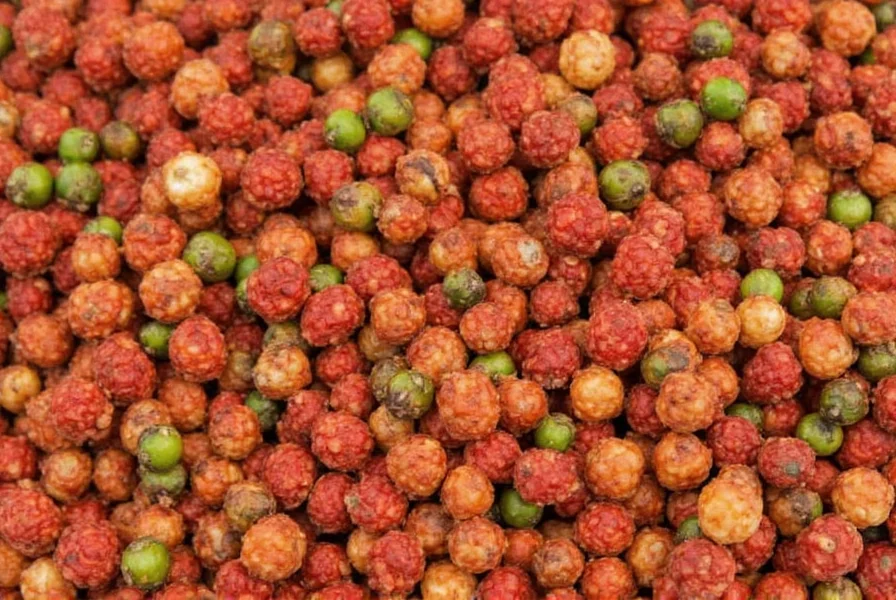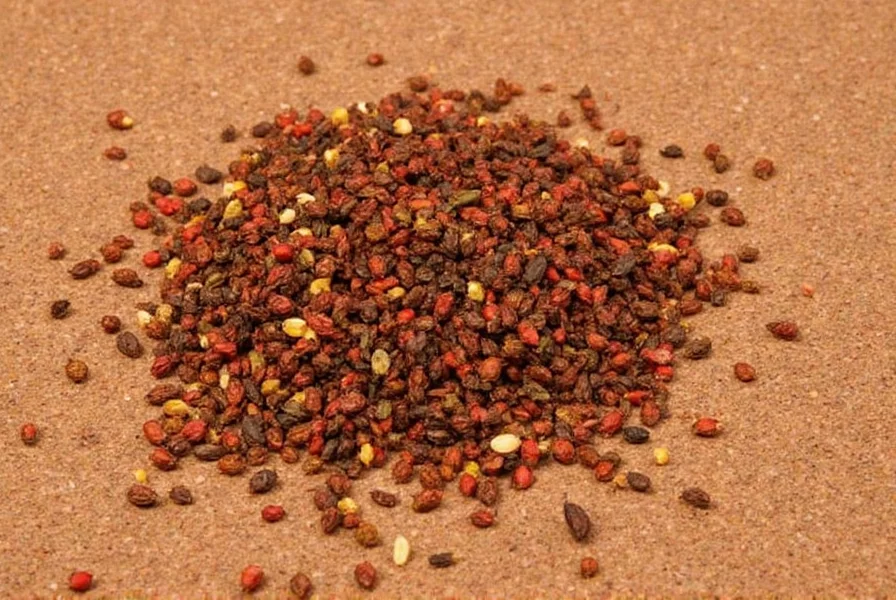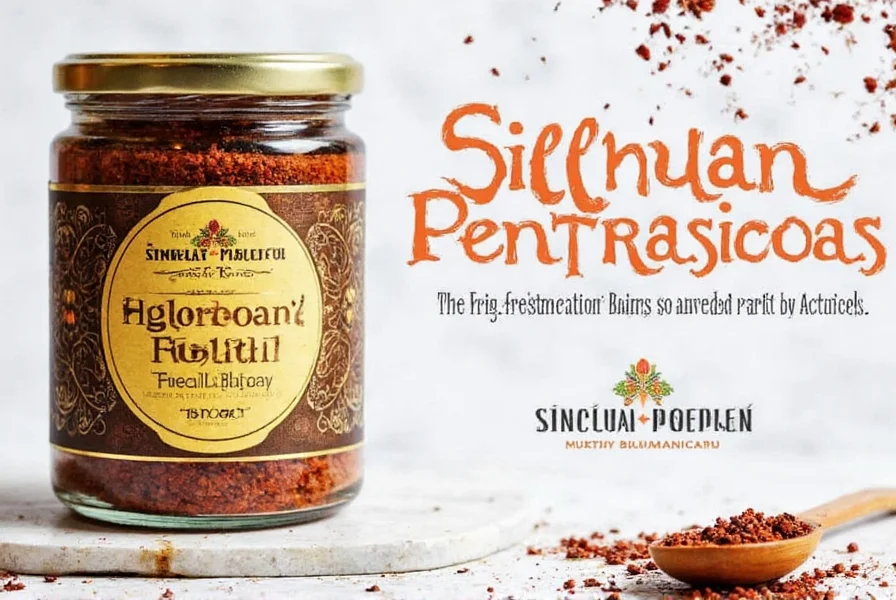Sichuan Pepper: The Tingling Sensation That’s Taking the World by Storm!
Table of Contents
- A Taste Unlike Any Other
- The Roots of Sichuan Pepper
- Why Does It Tingle?
- Sichuan Pepper Around the World
- How to Use Sichuan Pepper in Cooking
- Buying Guide: Finding the Best Sichuan Pepper
- Final Thoughts
A Taste Unlike Any Other
If you’ve ever bitten into a dish that made your mouth feel like it was buzzing — not with heat, but with a tingling numbness — you’ve probably encountered Sichuan pepper. This unique spice, native to China’s Sichuan province, has been capturing palates and sparking curiosity across the globe. Known for its signature numbing effect, it's far from your typical chili-induced burn.
The Roots of Sichuan Pepper
Used for over 2,000 years in Chinese cuisine and medicine, Sichuan pepper (or “hua jiao” as it's known locally) has deep cultural significance. While its cousins — black pepper and chili peppers — hail from the Americas, Sichuan pepper is a completely different beast. Botanically speaking, it comes from the prickly ash tree (Zanthoxylum spp.), making it more closely related to citrus than any other common spice.
Historically, it was used to balance flavors, aid digestion, and even relieve toothaches. Its aromatic qualities and distinct taste made it a staple in Sichuanese dishes such as mapo tofu and hotpot — where it plays as much a role in flavor as in sensation.

Why Does It Tingle?
Forget everything you know about spiciness. Sichuan pepper doesn’t bring the fiery pain of capsaicin found in chilies. Instead, it delivers a zesty, electric buzz thanks to a compound called hydroxy-alpha-sanshool.
This compound interacts with your nerve receptors, triggering rapid vibrations in your lips and tongue — almost like a mild, pleasant form of pins and needles. Scientists have measured this tingling at around 50 vibrations per second — similar to the feeling of touching a running electric motor.
In short: You're not imagining things when you feel your mouth buzzing after eating a Sichuan-style dish!
Sichuan Pepper Around the World
What was once a regional secret is now a global darling. From upscale restaurants in Paris to trendy food trucks in Brooklyn, chefs are experimenting with this once-exotic ingredient in exciting ways.
Popular Global Uses:
- Ice Cream & Desserts: In Japan and the U.S., it's infused into ice creams, chocolates, and even cocktails for a surprising flavor twist.
- Seafood Pairings: Some European chefs sprinkle it over scallops or salmon for an aromatic kick.
- Spice Blends: In the Middle East and India, it’s starting to appear in custom masalas and dry rubs.
| Region | Use Case | Flavor Profile |
|---|---|---|
| China | Mainstay in hot pot, stir-fries, mapo tofu | Pungent, woody, floral, with strong numbing |
| Japan | In desserts, yakitori glaze | Citrusy, less intense numbing |
| France | Fusion cuisine, sauces, foie gras pairings | Earthy, complex, refined tingle |
| USA | Gourmet burgers, craft cocktails | Bold, punchy, modern twist |
How to Use Sichuan Pepper in Cooking
Whether you're a home cook or professional chef, incorporating Sichuan pepper can add depth and excitement to your meals. Here are some top tips to get started:
Top 5 Tips for Using Sichuan Pepper:
- Dry Toast for More Flavor: Lightly toast whole peppercorns in a dry pan before grinding them. This unlocks their essential oils and enhances aroma.
- Grind Fresh: Like many spices, Sichuan pepper loses potency quickly once ground. Use a mortar and pestle or spice grinder just before cooking.
- Avoid Overuse: A little goes a long way. Start with small amounts and adjust based on tolerance and preference.
- Pair with Citrus or Chili: Combines beautifully with lemon zest, soy sauce, garlic, and dried chilies for bold, layered flavor.
- Infuse Oils or Vinegars: Make homemade chili oil or vinegar by steeping toasted peppercorns in warm oil or rice vinegar.
Classic Dishes to Try:
- Mapo Tofu: A spicy, savory, and numbing tofu stir-fry with minced meat.
- Kung Pao Chicken: Sweet, sour, and slightly numbing with peanuts and chili.
- Sichuan Hot Pot Broth: Rich, spicy broth loaded with numbing flavor.

Buying Guide: Finding the Best Sichuan Pepper
Not all Sichuan pepper is created equal. Quality varies widely depending on origin, processing method, and storage. Here’s how to find the best one for your kitchen:
Key Features to Look For:
- Color: Should be vibrant red-brown; dull color means age or poor quality.
- Smell: Must have a strong, citrusy, aromatic scent — not musty or stale.
- Texture: Whole peppercorns should feel light and crisp — avoid soft or oily ones.
- Packaging: Air-tight containers or vacuum-sealed bags help preserve freshness.
Types of Sichuan Pepper
| Type | Description | Best For |
|---|---|---|
| Hong Hua Jiao (Red Flower Pepper) | Most common type; bold flavor and strong numbing effect | Hot pots, stir-fries, marinades |
| Qing Hua Jiao (Green Sichuan Pepper) | Milder, fresher, grassier flavor; less numbing | Desserts, infusions, seafood dishes |
| Hand-picked vs. Machine-harvested | Hand-picked tends to be cleaner, with fewer stems and impurities | Professional kitchens, gourmet use |
Recommended Brands
- TenderSpoon Premium Sichuan Peppercorns: Hand-picked red variety with intense numbing effect. Ideal for serious cooks.
- Oriental Harvest Organic Line: USDA-certified organic, great for health-conscious users.
- Chengdu Spice Co. Green Blend: Mild green version perfect for pairing with fish or fruit.
Storage Tips
- Store in air-tight container away from light and moisture.
- Keep whole until ready to use; grind only as needed.
- Freezing helps preserve flavor longer — especially for green varieties.
Final Thoughts
Sichuan pepper isn't just another spice — it's a sensory experience. From its historical roots in ancient China to its modern-day fame on global menus, this tiny pod continues to surprise and delight food lovers everywhere. Whether you're a culinary pro looking to expand your flavor palette or a curious home cook wanting to try something new, Sichuan pepper offers a uniquely thrilling journey for your taste buds.
So next time you're at the market or browsing online, don’t pass it by. Grab a jar, toast it up, and let your mouth enjoy the buzz it truly deserves!











 浙公网安备
33010002000092号
浙公网安备
33010002000092号 浙B2-20120091-4
浙B2-20120091-4